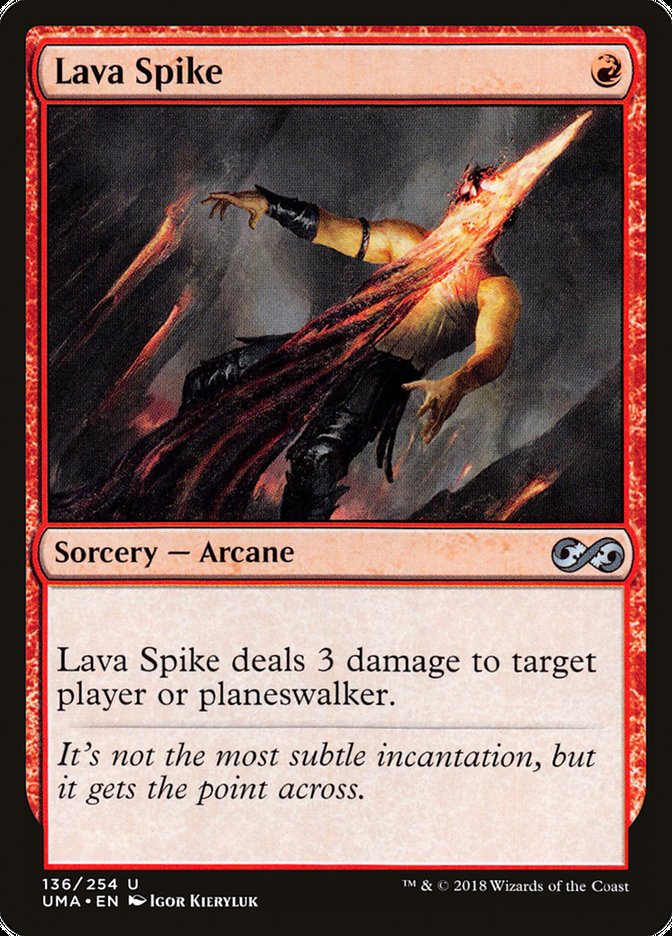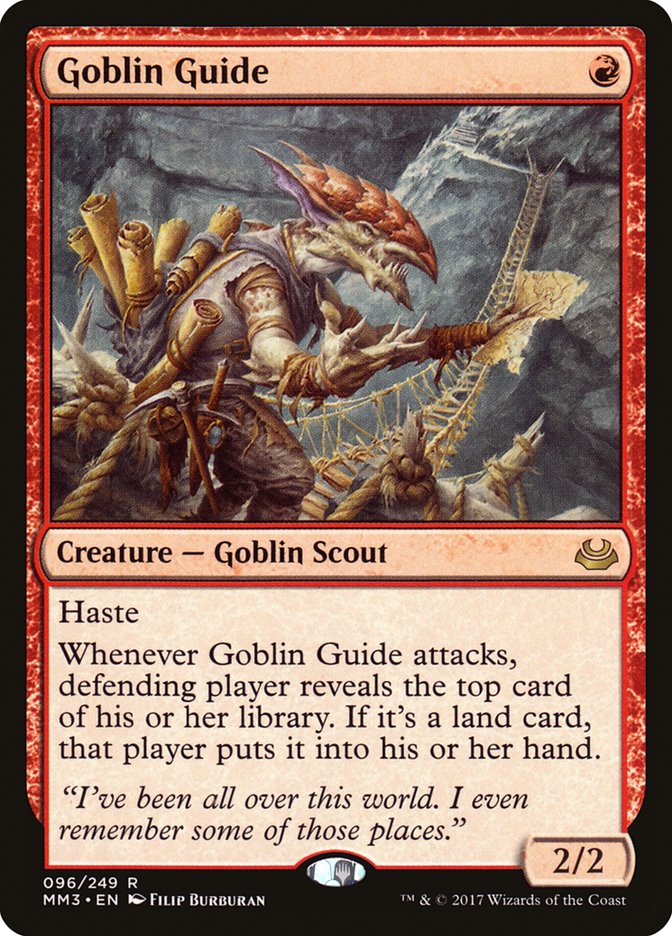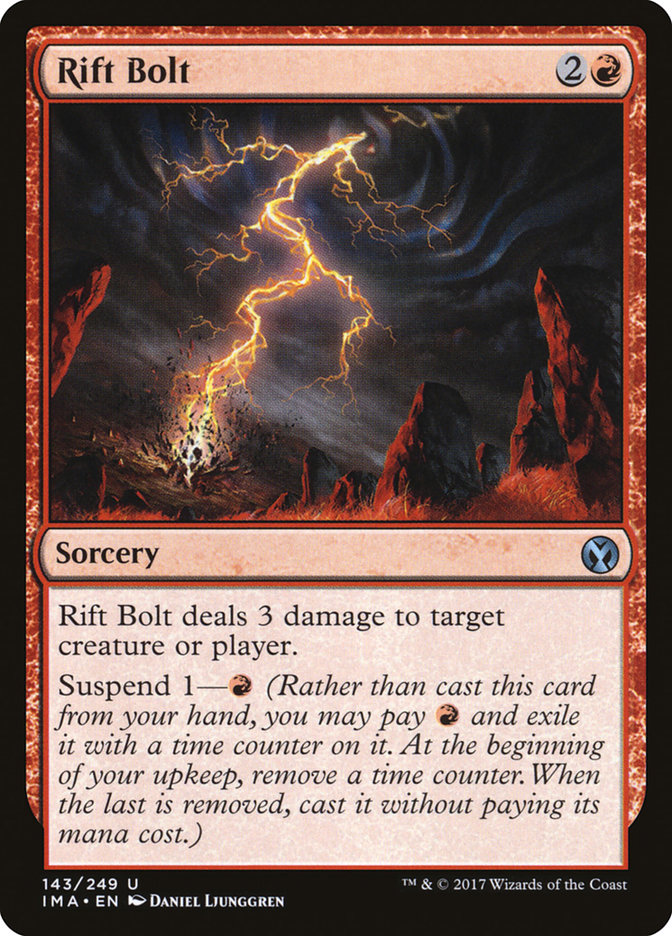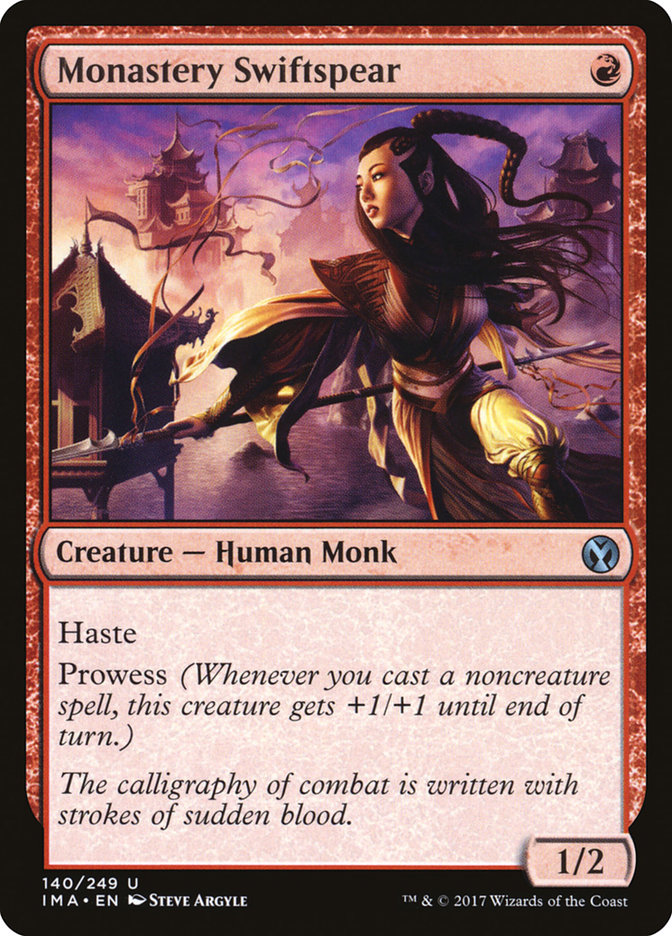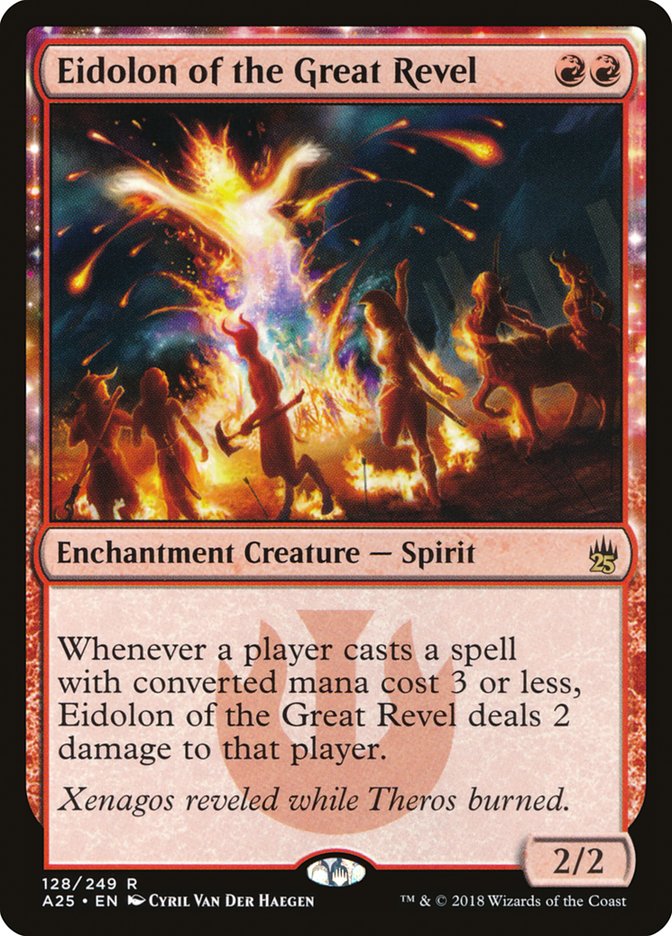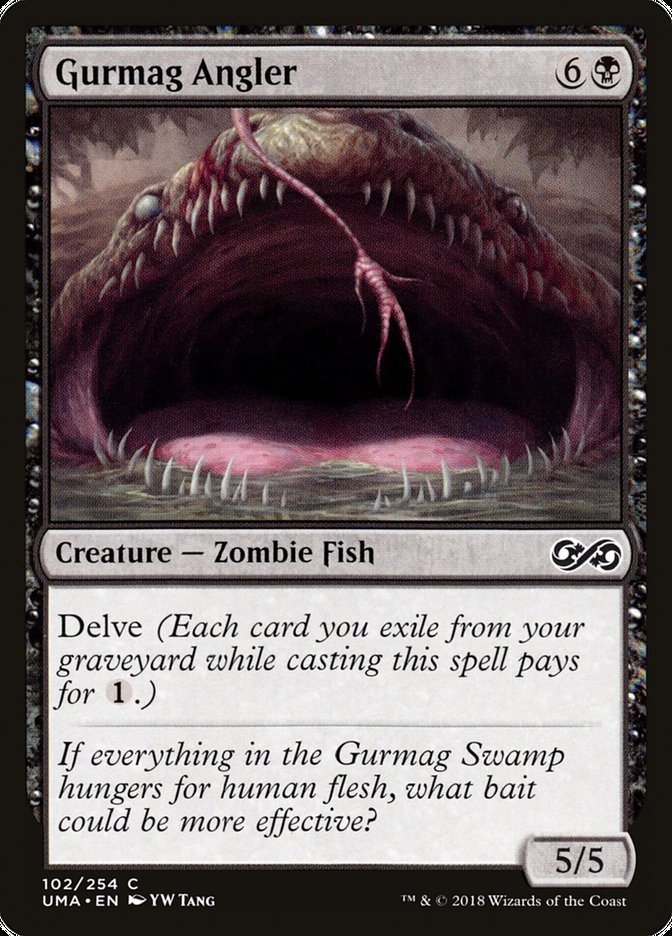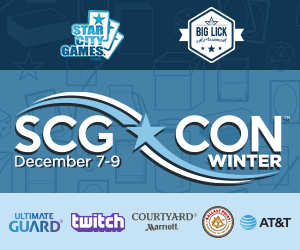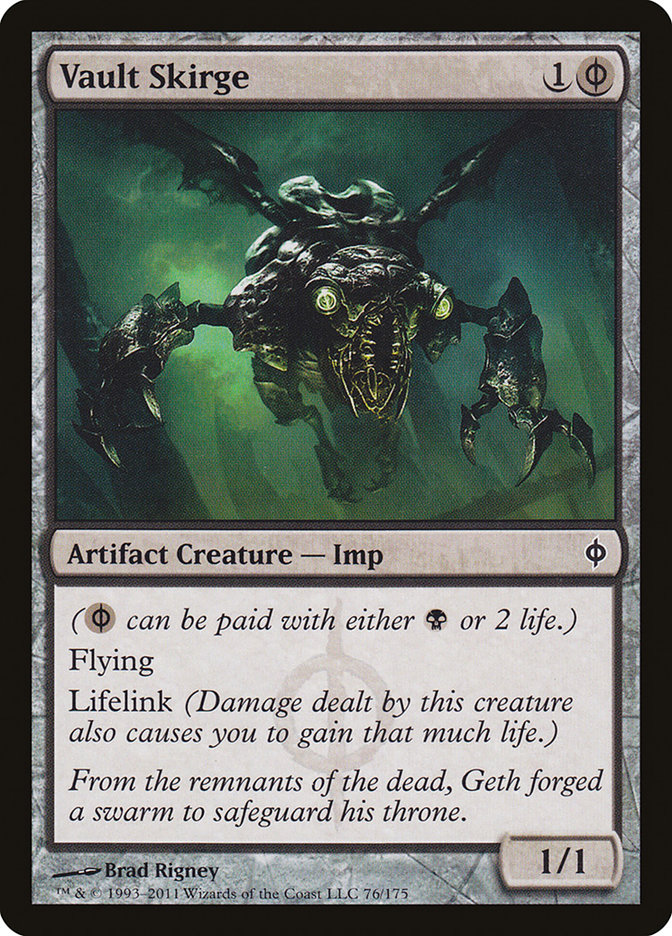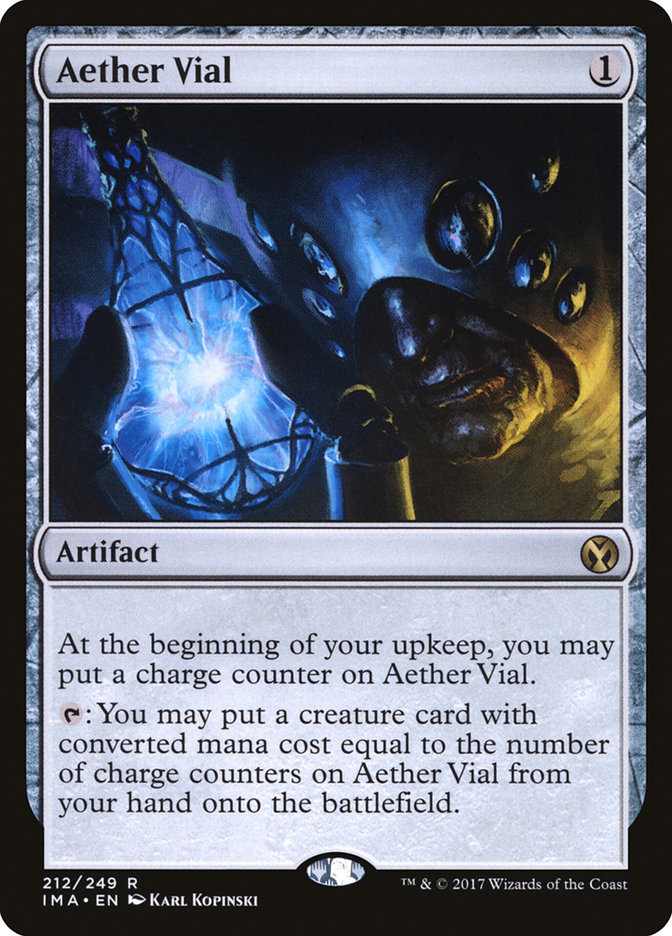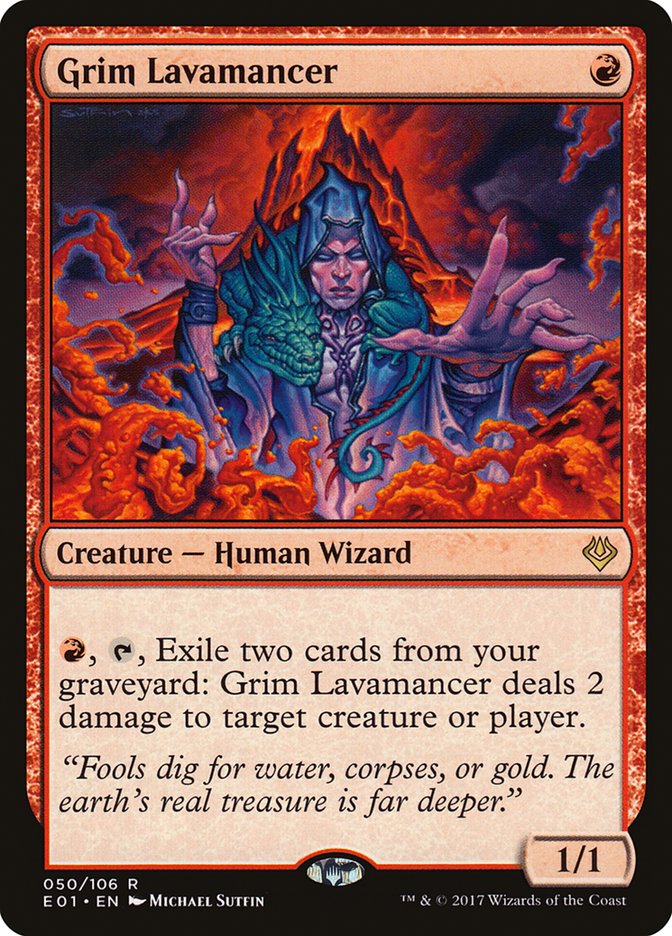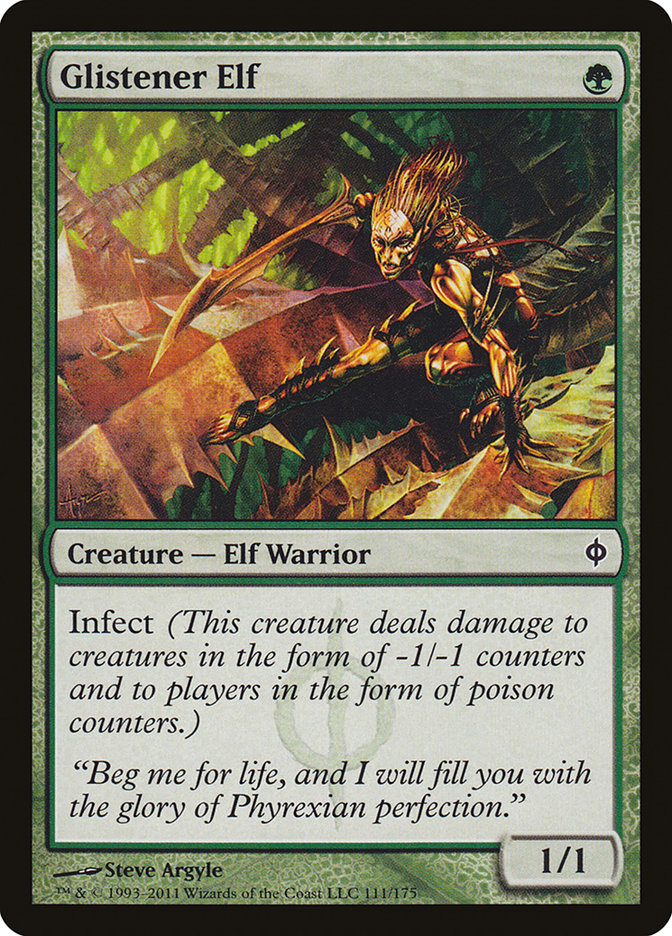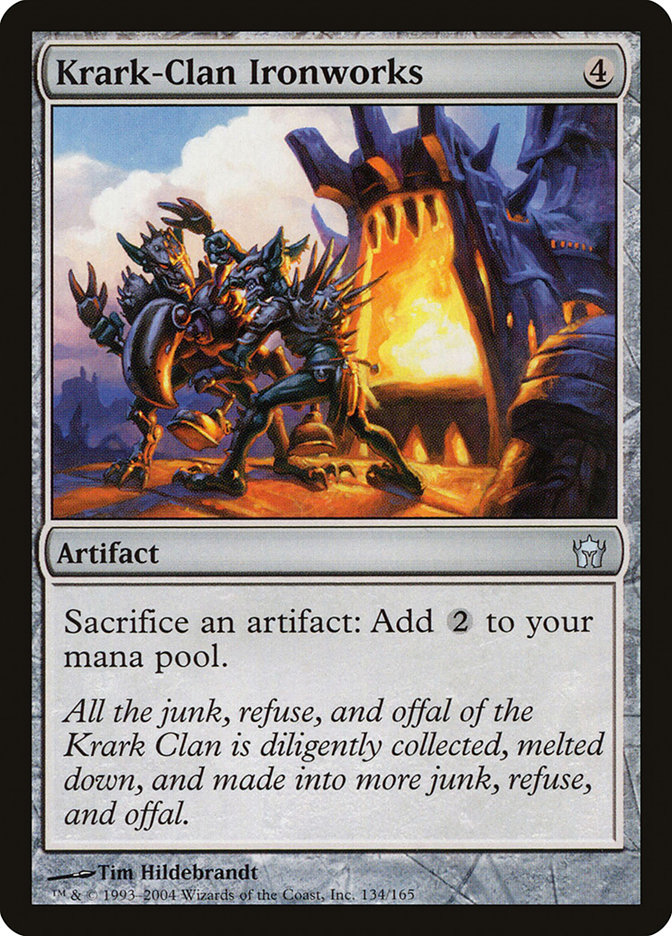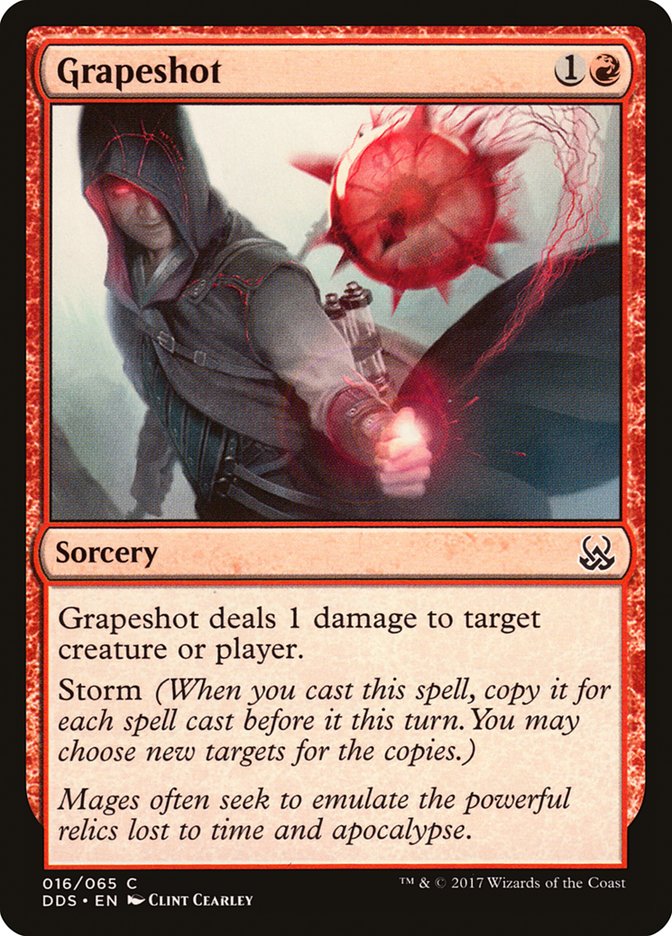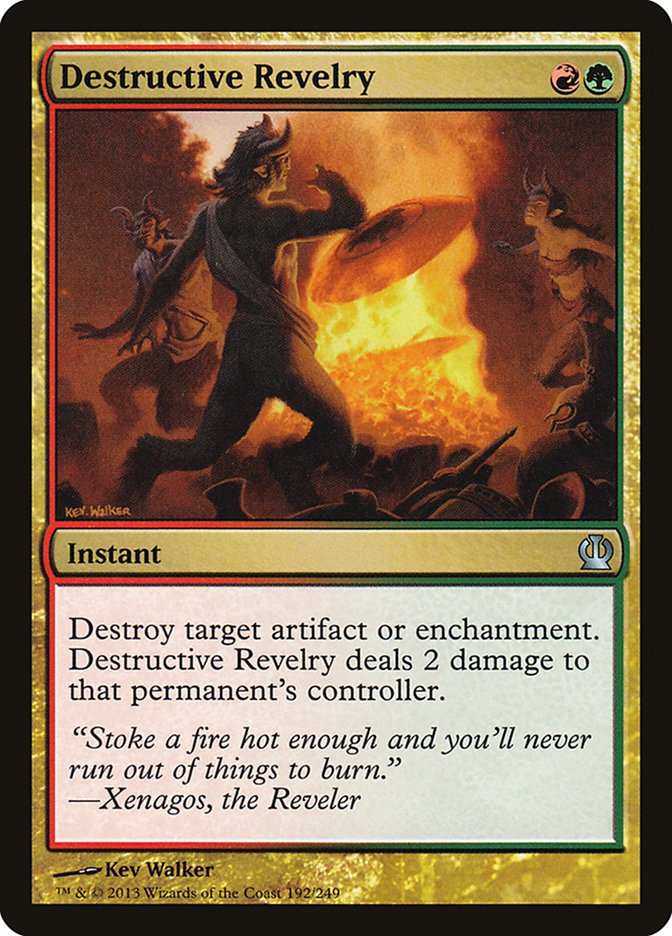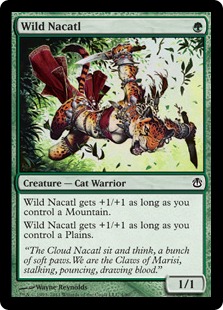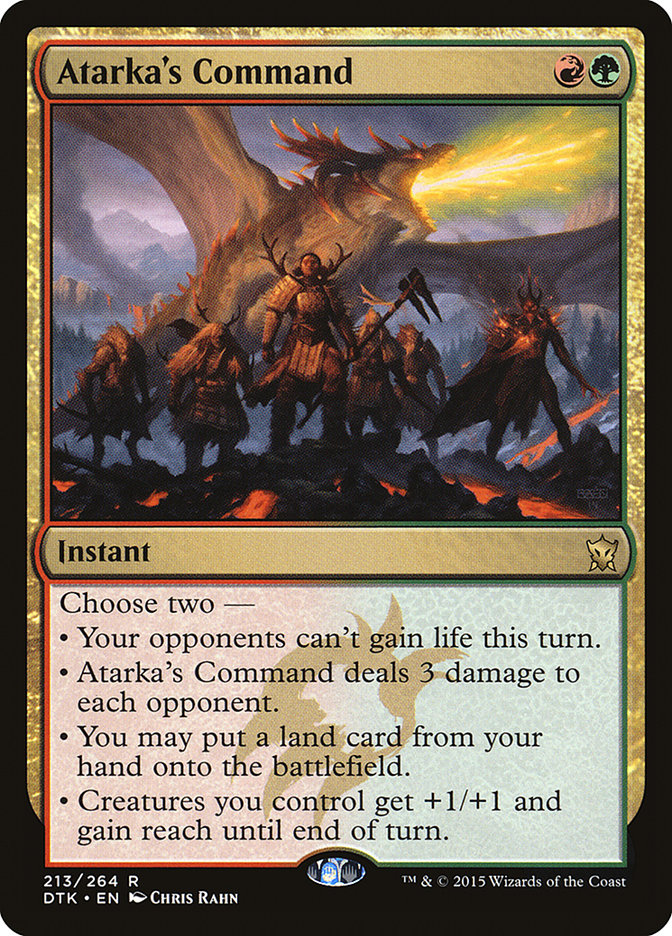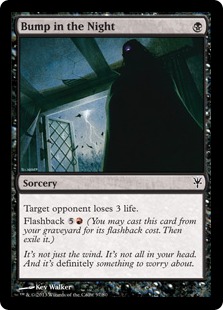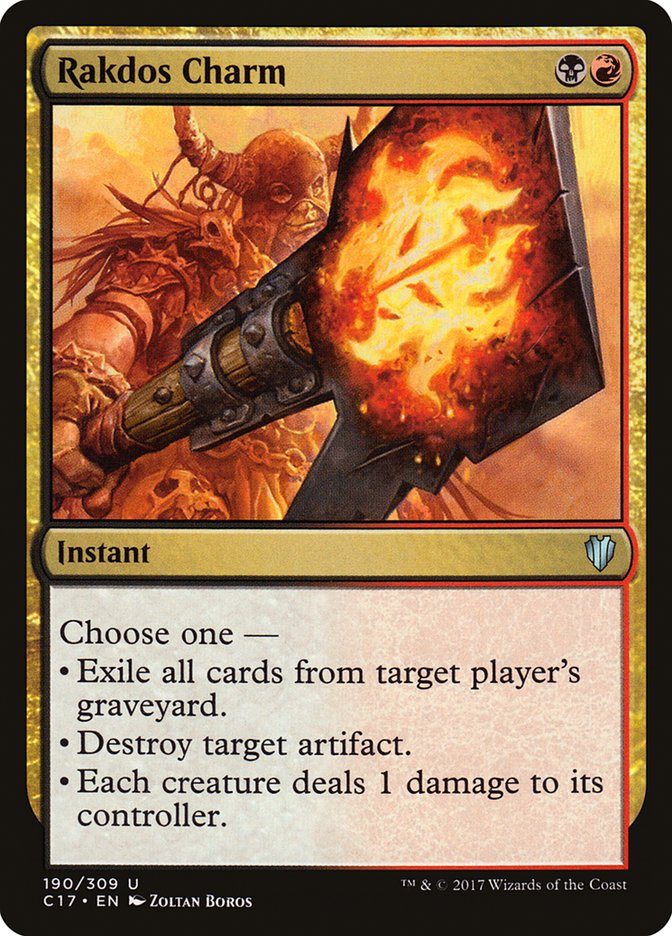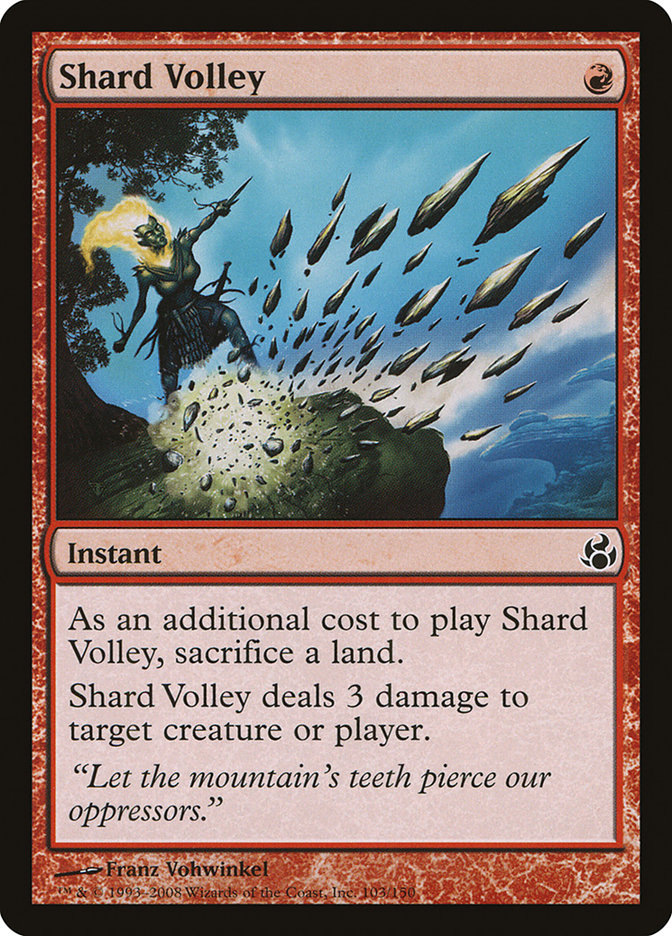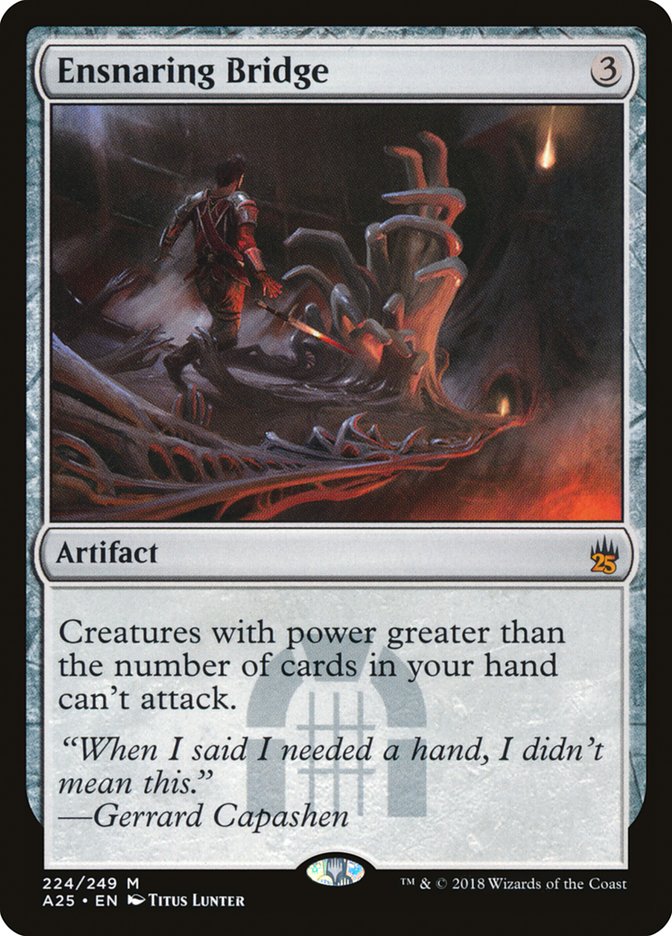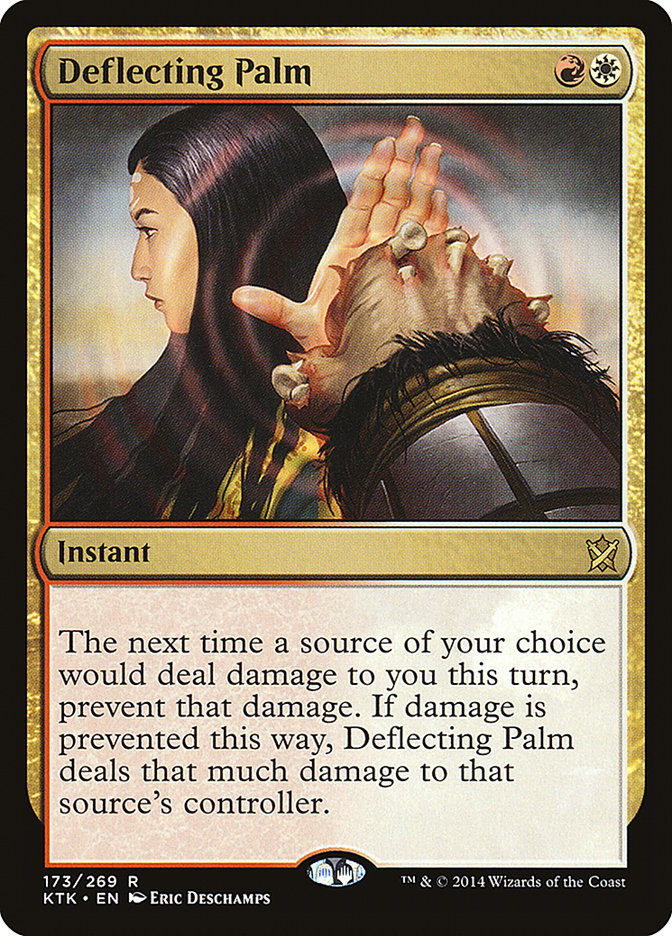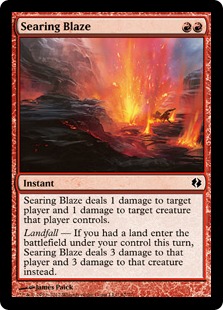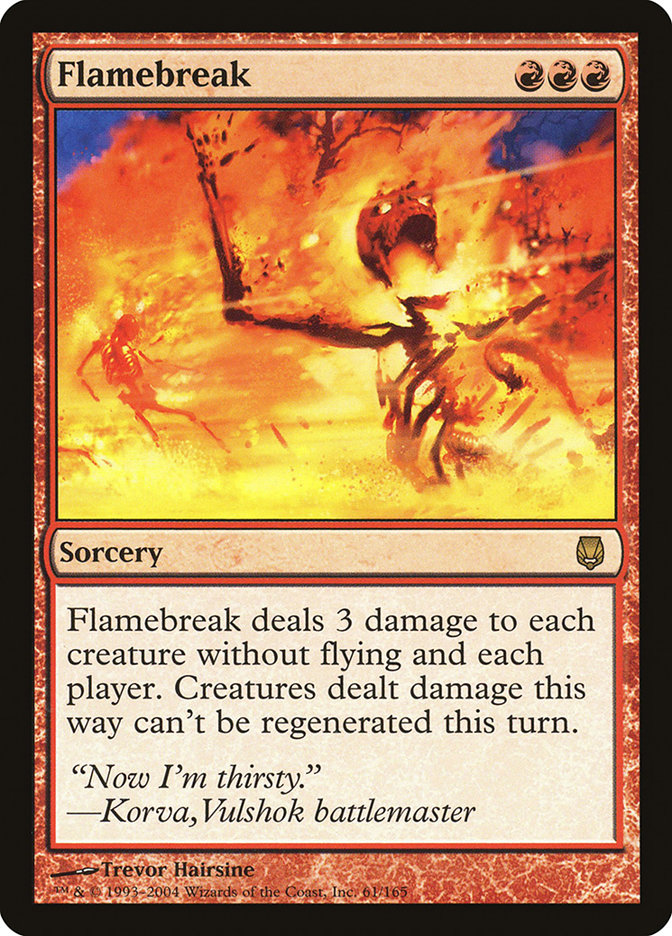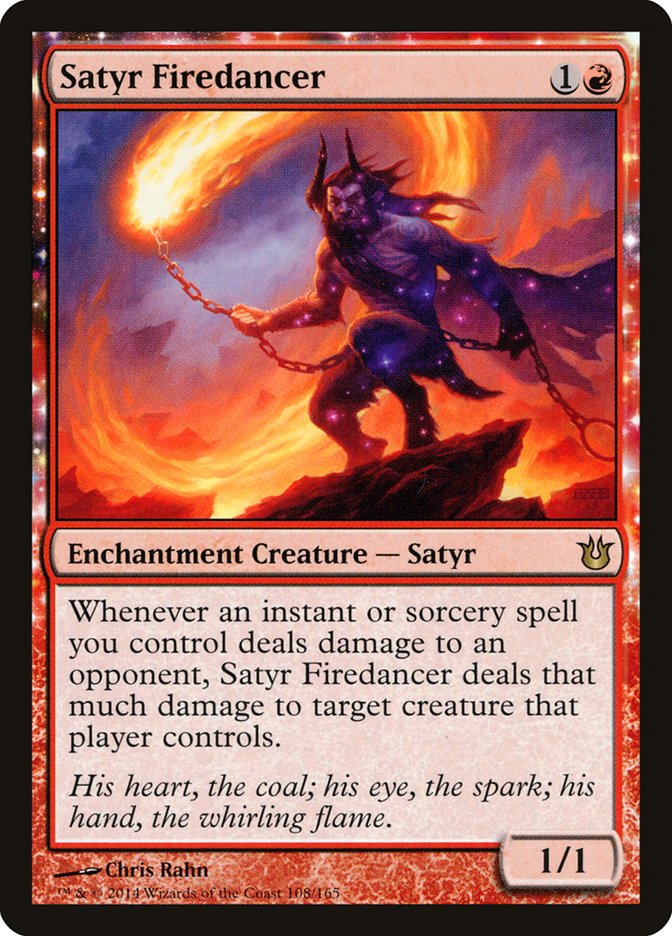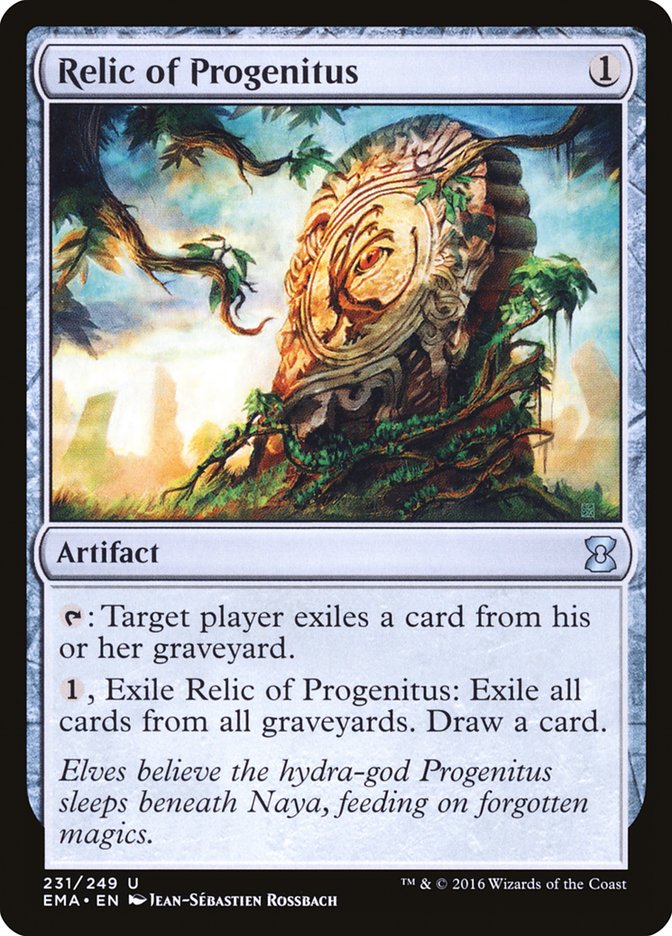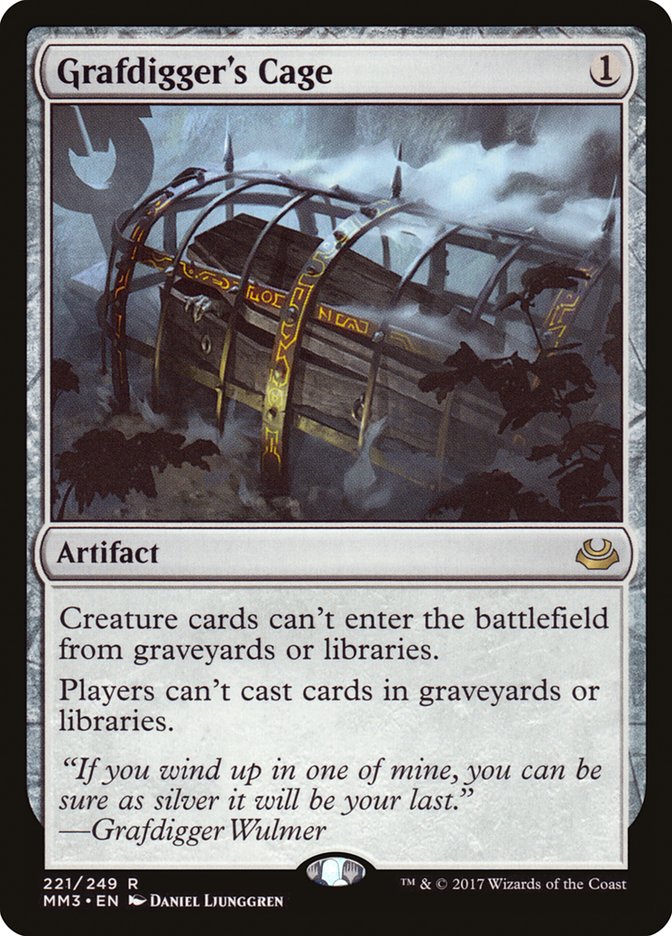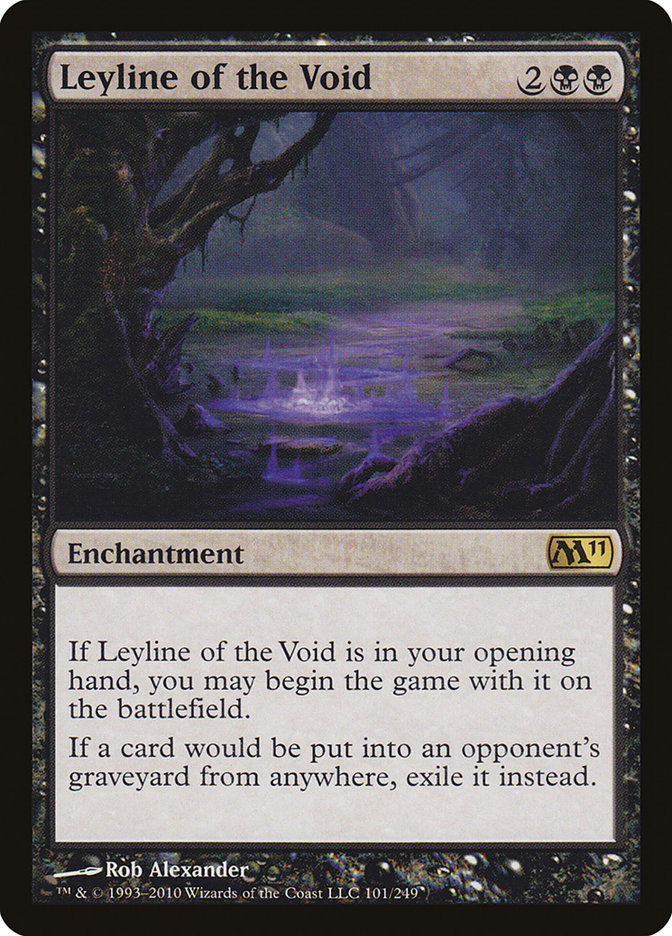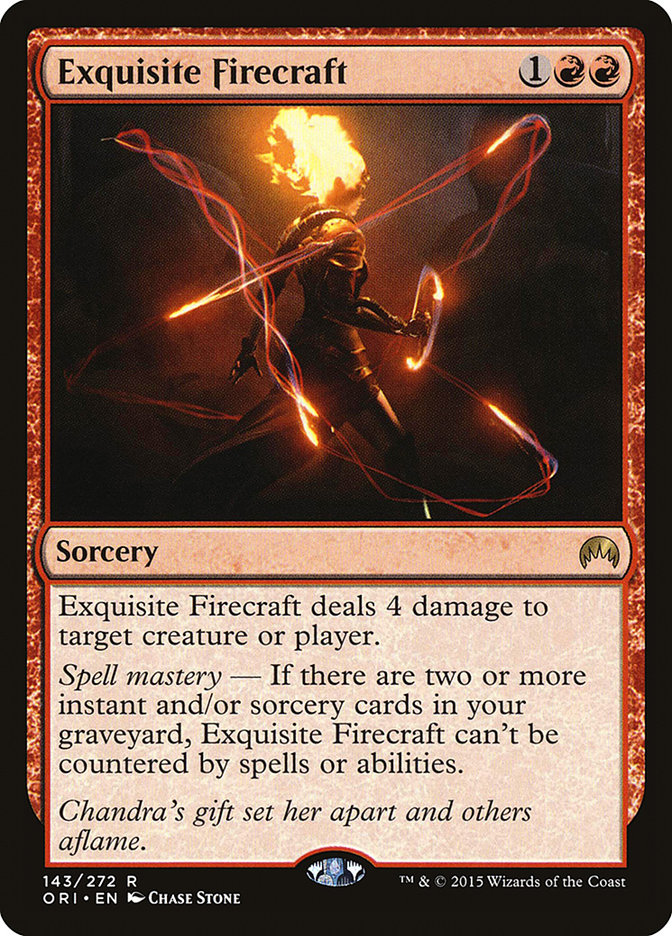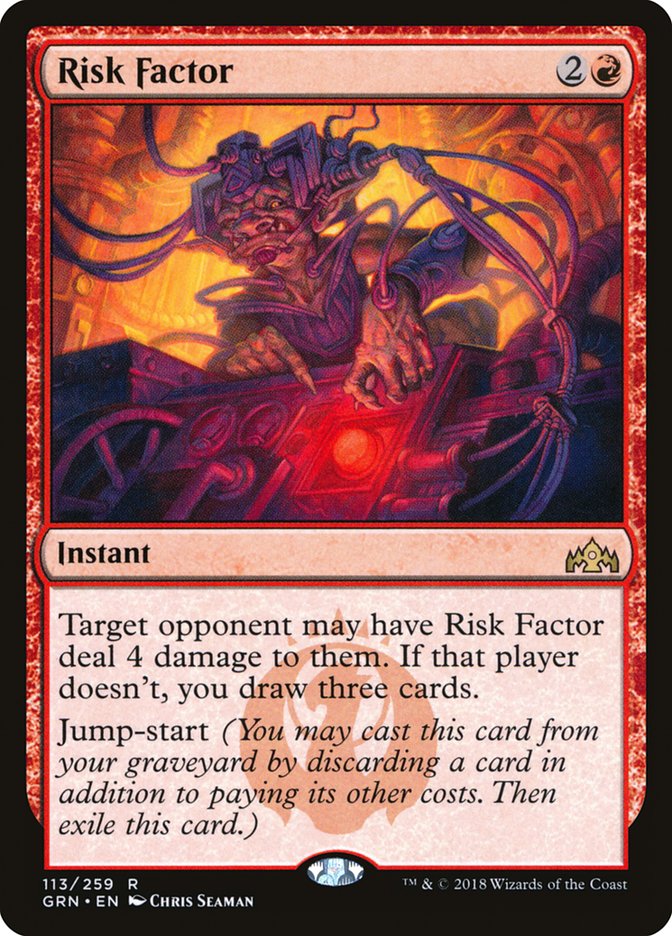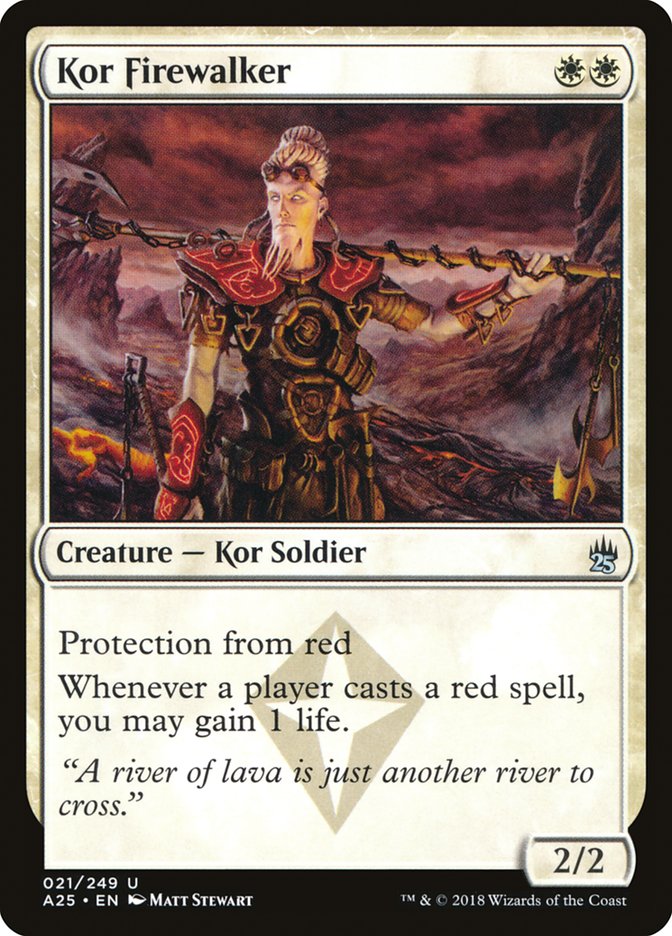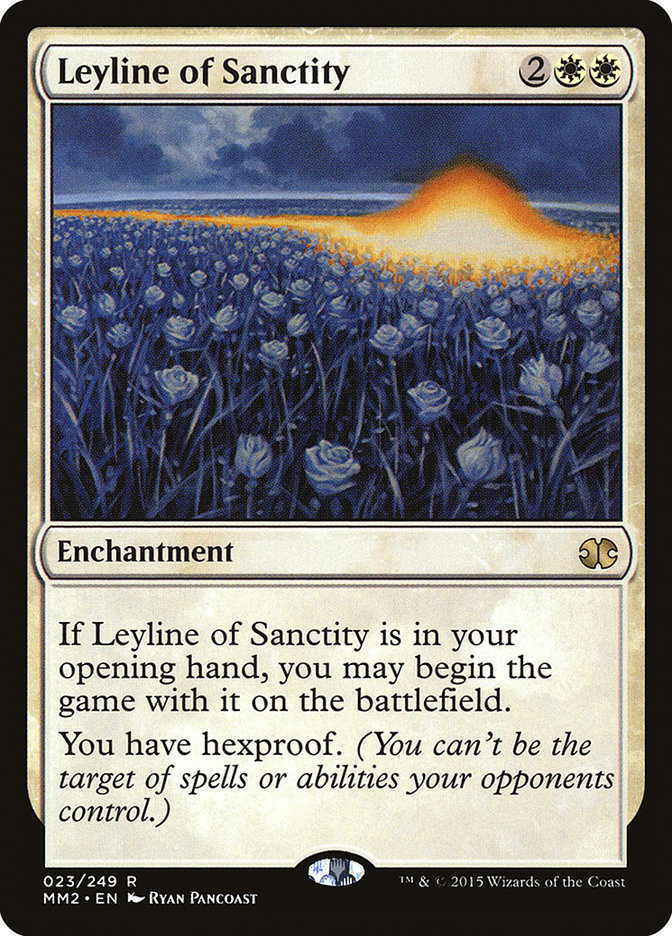“Goblin Guide, trigger.”
“‘Swiftspear. Spike you. Trigger. Trigger.”
“Boros Charm you. Trigger. Trigger. Suspend.”
”
Rift Bolt you. Trigger. Bolt. Trigger. Helix you. Trigger. Trigger.”
“Good Game.”
It always looks so easy, doesn’t it?
For as long as Modern has been around, there’s always been some version of
Mountains and Lava Spikes. For a ton of people, it’s a great budget option
for getting into the format. With both Eidolon of the Great Revel and
Goblin Guide seeing reprints in the last year or two and all of the dual
lands in the deck being printed in the last Standard or so, many people
still have copies of the cards sitting in their trade binders.
Creatures (14)
Lands (19)
Spells (27)
Sideboard

One thing that people frequently will talk about with Burn without delving
much further is that Burn can be fairly easy to pick up but incredibly
difficult to master. It’s like Magic in that way. Understanding what needs
to be accomplished and then making it happen with the cards we’re given is
the name of the game, and the honest, linear nature of the Burn deck does a
lot to reward players that can understand exactly what it is that they want
to be doing. That doesn’t even get into the importance that the
deckbuilding process can play with something like Burn. Before we get into
the differences in deckbuilding, we need to first have a fundamental
understanding of what it is that Burn is trying to do.
Nuts and [Lightning] Bolts
At its core, Burn is just trying to use its spells to reduce the opponent’s
life total to zero. It sounds obvious to put it in those terms, but
everything we know about the deck is going to be framed around this idea
and recognizing the fact that the cards from Burn aren’t generally going to
be interested in doing anything that doesn’t keep its own clock ahead of
the opponent’s.
On that note, the way that Burn’s card advantage functions is unlike any
other deck in Magic.
If the card Lava Spike isn’t evidence enough, discarding cards for the sake
of putting the opponent closer to zero life is the name of the game. This
means that the value of a card is going to be measured in how much damage
it will be dealing to the opponent. For some cards, this is fairly obvious.

It doesn’t matter how proficient a Burn pilot is. Rift Bolt is never going
to deal more than three points of damage to the opponent. Some games with
Burn can be frustrating because although drawing nineteen points of Burn is
very close to twenty, it isn’t enough to kill the opponent and that’s that.
When referring to cards that have a less rigid value, I’m talking about the
things that can deal zero damage in some cases and seemingly infinite in
others:
I’ve
previously touched on
the value of a permanent being tied to how long it remains on the
battlefield and Burn pushes that theory to the extreme. If a Goblin Guide
connects once, it’s a slightly worse Lava Spike; twice and it’s a one-mana
Boros Charm; three times and it was worth two cards in the Burn deck; four
times is Magical Christmasland.
On the other side of things, the creatures are also the easiest way to
control the opponent’s clock via blocking. This becomes relevant against
decks like Death’s Shadow and Humans, where stopping a single Champion of
the Parish or Death’s Shadow can be the difference between getting that
crucial draw step and being a spell short of killing the opponent.
Back to the topic of gettin’ people dead during the combat step, think
about how a “bad” attack can be good. Imagine a battlefield on which the
opponent has two big creatures and you have three different smaller
creatures:
Depending on the opponent’s life total, it can end up being correct to send
the squad into the red zone. For something cut and dry, imagine the
aforementioned battlefield, with the opponent at five, and a copy of Lava
Spike in your hand. Lava Spike plus the single creature getting through for
damage is going to be worth five points of damage, and that’s fine, even if
it sounds bad to sacrifice two Goblin Guides to only get two points of
damage through.
When the amount of damage a card deals dictates its value, normal ideas of
card advantage can go completely out the window.
Imagine a scenario in which the opponent has a copy of Reflector Mage on
their side of the battlefield.
In your hand, you have three copies of Goblin Guide. There’s nothing on
your side of the battlefield but a pair of lands. In this scenario, it’s
possible to cast and attack with two of the Goblin Guides, meaning that the
one Goblin Guide that the Reflector Mage inevitably blocks will have been
worth two damage. That’s calculated by looking at how much damage that card
was able to create. With it being in the graveyard, it isn’t going to
create any more opportunities to deal damage, but it existing as a body on
the battlefield allowed another Goblin Guide to get through. Can it be
worth more?
Assuming the opponent plays one creature the following turn, it would end
up being worth less damage, as it would take all three Goblin Guides
attacking in order to deal that same two points of damage, but in that
exchange, we can presume that two of the Goblin Guides would die, making
them only worth one point each.
On the other hand, if the opponent doesn’t play anything else, attacking
with three Goblin Guides (with one of them dying) is going to make that
copy of Goblin Guide worth four points of damage. Not everything is
necessarily going to be this cut-and-dry, but thinking of things in these
terms is a great mindset for calculating the maximum value that can be
squeezed out of Burn’s creature lineup.
Eidolon (
pronounced “eye-dole-un”
) [You’re the best.–DWest] is easily one of the most commonly
misplayed cards in the deck, and it’s easy to see why.
Similar to the theory of the previously mentioned creatures, Eidolon’s
value is going to increase with each spell that triggers it. Intuition says
that this means it’s always going to want to be played early, but that
isn’t always the case.
What about decks that can race Burn the fair way?
Or play all their cards before Eidolon hits the battlefield?
Or play a fair game without casting a ton of spells?
Nine matches out of ten, it’s going to be correct to just jam Eidolon of
the Great Revel on turn 2 and go from there, but even outside of the above
matchups I’ve alluded towards, there are even a handful of sequences during
which sequencing for damage is going to be important.
The coveted triple one-drop creature hands are games during which jamming
the three creatures on the first and second turns is going to be better
than playing the Eidolon, both because the other cards have the same
diminishing returns as the game progresses, but also because playing
multiple spells that have value tied to their turns is going to be better
than investing the resources (read: mana) into the single Eidolon of the
Great Revel.
The exception to this rule is against the fast decks that tend to play a
bevy of fast spells in the early turns.
For the matchups that Eidolon is a maindeck hate-card, jam away.
Variants
At this point, there’s the streamlined Boros deck from which most Burn
shells derive, but there are three common draws to other versions of the
deck.
Roughly half of the successful Burn pilots in the last year or so have
played a single copy of Stomping Ground in order to play Destructive
Revelry out of the sideboard. I’m obviously going to have my biases, but
with artifacts being the most common card type to Naturalize and Leyline of
Sanctity on the decline, it’s less likely that Destructive Revelry is any
better than Smash to Smithereens.
Whenever other linear strategies are running rampant, it’s common for the
“real” Naya Burn deck to run free:
Creatures (16)
Lands (18)
Spells (26)

The most attractive aspect of this deck is that it’s the version of Burn
with the most explosive goldfish. If the opponent isn’t playing creature
removal, Wild Nacatl is just a fancier Rift Bolt – and by fancier, I mean
“it casts another Rift Bolt every single turn for the rest of the game.” To
that effect, Atarka’s Commands count as Boros Charms numbers five through
eight if the Burn player has at least one creature on their side of the
table and things get wilder with even more creatures after that.
The third take on the deck is the deck with the most consistent goldfish.
Creatures (12)
Lands (20)
Spells (28)

The idea behind Bump in the Night and Shard Volley is that “The Plan” of
resolving seven Lava Spikes in order to kill the opponent is just fine and
maximizing the odds of that happening is the best route to victory.
On top of that, it gets access to one of the cutest sideboard cards in
Modern:
On top of being a reasonable answer to two of the most abused things in
Modern (the graveyard and artifacts), Rakdos Charm has the benefit of
having a “your opponent loses the game” mode if it’s drawn after a bunch of
Prized Amalgams or Thopter tokens have hit the battlefield.
When its modes are good, they’re great, and this power has led it
to even start getting some attention in the same way that Destructive
Revelry is:
Creatures (14)
Lands (19)
Spells (27)
Sideboard

Single Card Discussion
We’ve broken down each version of Burn and what they’re good for, but that
doesn’t go incredibly deep into why some cards see more play than others
and what cards may just be traps.
As long a Noble Hierarch is in multiple top strategies, it’s going to be
hard to convince anybody that its natural foil isn’t going to be an
auto-inclusion in Burn. The biggest drawback that Grim Lavamancer suffers
from is that it’s slow.
When people are playing combo and control decks, Grim Lavamancer is either
going to suffer from not dealing enough damage before combo ends the game,
or not being able to deal damage the turn that it’s cast. Against the
creature decks, though, having the ability to get a free miniature
Lightning Bolt every turn is going to win entire games by itself.
Shard Volley’s popularity has waxed and waned over time, but with the
fairly streamlined “stock” list at the beginning, Shard Volley has fallen
by the wayside as of late. Shard Volley is great in exactly the Bump in the
Night variants of the deck due to the fact that that version of the deck
has a leaner curve and doesn’t tend to fool around with things to sink its
mana into.
Grim Lavamancer doesn’t play well with Shard Volley, due to its demand for
extra mana each time it’s activated and Lavamancer’s power over the last
year or so has really been the biggest reason that there aren’t many Shard
Volleys running around. That, and…
Ensnaring Bridge has been increasing in popularity as of late, what with
Thalia and her Lieutenants running around the format. The reason that
Ensnaring Bridge in particular plays so poorly with Shard Volley isn’t just
in the fact that Ensnaring Bridge costs three mana and Shard Volley takes a
land away, but it can create these kinds of situations:
Whetstone is a great Burn player on the SCG Tour and has been playing the
deck forever but learned a very hard lesson in the tension that can be
created by playing cards that play well when ending the game and a card
that wants to prolong the game indefinitely.
For Ensnaring Bridge to be good against the creature decks, its controller
is going to presumably play all the cards in their hand every turn and
never let the opponent attack with anything. Unless Shard Volleys put their
caster down to a single land and that player draws a plethora of two-drops
or more Ensnaring Bridges.
Setting the nightmare scenario aside, Ensnaring Bridge is a great way to
buy time against the creature-based decks in the format, but with the two
biggest ones (Bant Spirits and Humans) having access to Knight of Autumn,
it isn’t the permanent lights out that it used to be.
Path to Exile goes in and out of Burn with the intention of answering
things that will make it impossible for Burn to reasonably race the
opponent. Think Champion of the Parish, Tarmogoyf, Death’s Shadow, Wurmcoil
Engine, and so on.
Path to Exile is nice because it doesn’t have a specific timing that it
must be cast, meaning it’s easier to use through disruption. For something
that’s less flexible but way more punishing, there’s always….
Deflecting Palm is Lightning Helix on steroids except against players who
can see it coming. Kitesail Freebooter decks also have Meddling Mage.
Death’s Shadow also has Stubborn Denial.
On the other side of the coin, Infect tends to have to work pretty hard to
race Burn, so having the mana for something like Spell Pierce isn’t a
given. The same can be said for Reality Smasher or other meatheads that
don’t worry much about disrupting the opponent, opting to simply beat
opponents up instead.
For smaller creatures, it’s important to note that Searing Blaze is
literally the most important card in the matchup. It’s interaction and a
Lava Spike in one card! Searing Blood is more copies of the best card in
the matchup.
Whenever lots of little creatures are running around, these are the best
sweepers to look towards. Flamebreak is the best in a vacuum, as it also
hits the opponent’s face, but small-ball creature decks are notorious for
caring about things dying (looking at you, Kitchen Finks), and Anger of the
Gods is more effective in those scenarios.
In times when it’s correct to play either of these cards, it’s rare that
it’s more than one or two copies, but recognizing the specific creatures
they’ll be killing is the big deciding factor between the two.
Against creature decks that give a bit of breathing room, Satyr Firedancer
is the best way to turn all your spells into Searing Blazes. The biggest
drawback to the card is that most Modern decks are so streamlined and
proactive that there isn’t much breathing room to be had.

Each piece of graveyard hate has its own up and downsides, so in the
interest of brevity, I’ll rapid-fire each one:
Good against decks that need their graveyard to exist for multiple
synergies. Think something like Dredge or Mardu Pyromancer.
Good against graveyard decks with a single payoff card. Also good at
ensuring you don’t trip over drawing too many graveyard hate cards, due to
it cantripping after it’s used. It tends to be a bit slow in today’s
metagame but is fine when things like Goryo’s Vengeance and Living End are
popular.
Necessary against synergy decks that hinge on a single kind of card that
ends up in their graveyard. Ironworks is something that Burn would be
particularly interested in Surgical Extraction over other cards, as it
can’t simply be answered by something like Engineered Explosives before its
controller goes off anyway.
Grafdigger’s Cage will be the go-to graveyard hate exactly when Collected
Company is incredibly popular and Burn needs to dedicate a slot to turning
it off. Otherwise, it lacks many of the benefits that other cards have
going for them, while not actually answering the effects that it is turning
off. This means that once the ‘Cage is gone, all of the opponent’s cards
simply work again, whereas something like Rest in Peace is going to have
permanently exiled cards in the graveyard.
This card is a trap. It falls into the camp of “play four or don’t play
it,” but then the Burn pilot runs the risk of drawing too many copies and
simply dying because they drew too many blanks. The only time when Leyline
is that much better than anything else is against things in the vein of
Vengevine strategies, where explosiveness is the name of the game.
Exquisite Firecraft is easily one of the most misunderstood cards in the
sideboard of Burn. All the spell mastery nonsense matters, but similar to
Cavern of Souls, it isn’t relevant 80% of the time. Exquisite Firecraft is
frequently used as a version of Char that doesn’t have the same drawback.
Sometimes decks are going to try and interact with things like hand
disruption, and Burn isn’t going to be racing so much as it is struggling
to find enough resources in order to kill the opponent. Exquisite Firecraft
dealing more damage is going to be worth extra value on top of something
like Lava Spike in these situations.
For the incredibly slow, grindy affairs, Risk Factor plays a role similar
to Exquisite Firecraft. Modern is in such a fast place right now that
finding time to cast both halves of Risk Factor isn’t exactly a given, but
if we end up in a spot where people are just grinding each other to dust,
having a burn spell with a form of Flashback is going to be a welcome
addition.
What if I told you that in the Burn mirror, Kor Firewalker is a trap?
Having to fetch up multiple copies of Sacred Foundry has a very real cost
associated with it, especially when curving is as important as it is.
Inspiring Vantage did a ton of work to make Kor Firewalker more playable,
but the Firewalker is a bit too narrow to see much play in today’s Modern
world, where the most popular deck in a given field is only going to make
up between five and ten percent of the room.
When expecting a large chunk of Burn in the room, Leyline is going to be a
better go-to. It invalidates enough cards that running the risk of a brick
here and there is going to be fine. Without knowing that Burn is going to
be a large portion of the field, unfortunately, it’s a little harder to
justify something like this.
Just note that in the Burn mirror, there is a “protect Leyline from
Disenchant effects” mode on Boros Charm.
Picking the Cards for You
I’ve said it once and I’ll say it again: Modern is a format where you can’t
beat everything, but you can beat anything. Tuning a Burn list is going to
be a matter of choosing what decks you want to be able to beat and being at
peace with the fact that you might not place against those decks in the
tournament you’re entering.
Burn is easy to pick up, but the math isn’t always intuitive, and the
sideboarding is more complicated than one would normally assume. I’ve
intentionally left sideboarding notes out of this article but left the
proverbial breadcrumbs to help suss out what cards and effects are
important in different matchups.
Happy burning!


